I have a lot of cameras ranging from subcompact point-and-shoot cameras to my main camera: a huge Canon 1Ds Mark II. This full-frame professional monster is a fabulous camera that has served me well for over 100,000 images since 2005. Coupled with Canon’s L-series lenses, it has all but ruined me when trying any other camera. I have many smaller cameras, most of which I’ve purchased in an attempt to come close to the quality of my big rig in a smaller package. My current travel camera of choice is the Panasonic Lumix LX1, but since it’s showing its age, I decided to hunt for a new one and settled on the Panasonic Lumix GF1. I took the GF1 with me on vacation as my only camera for a week in order to put it through its paces.
Point and shoot cameras frustrate me not for their lack of controls – I accept that I’ll probably shoot on auto when using them – but for their poor image quality. The reason for the poor image quality is primarily due, in my opinion, to the continued drive for more pixels in the tiny sensors used in these cameras. For those not aware of the sensor size issue, allow me to explain. If you already know this, feel free to skip ahead.
Sensor Size
Compact point and shoot (P&S) cameras are convenient, but their sensors are tiny. How tiny? To the right of this paragraph is a comparison of sensor sizes. The largest rectangle shows how big a piece of 35mm photographic film would be in comparison to other sensor sizes. The smallest rectangle, in blue, shows the average sensor in a compact P&S camera scaled in comparison to the full-frame 35mm size. I’ll spare you the technical jargon, but understand that with everything else being equal, a larger sensor will produce a better image. The same was true for film as well; larger film produces a better image. This is why pros use medium format or even large format cameras. For the average person this may not matter much, but for an anal control freak like me who’s used to high-end gear, it’s a pretty big deal.
What’s worse, the image above is a very large representation of the actual sensors. This smaller image attempts to show the sensor sizes in actual 1:1 scale. See those tiny blue and green rectangles? Those are the sensor sizes in compact (blue) and even prosumer (green) cameras. The Four Thirds sensor in the Panasonic GF1 is substantially larger than either of them, and even approaches the APS-C sized sensor used in some DSLRs. This bigger sensor allows for much higher-quality images than the ones possible using the smaller sensors. Why? Pixel density for one thing.
Pixel density is the number of pixels per square centimeter. I’ll spare you the boring math. Just think of this: Many modern compact cameras have 12 MegaPixel (MP) sensors. That’s 12 million pixels in that little blue square. That means the pixels have to be tiny, and they have to be mashed together pretty tightly. This is a problem for a lot of reasons, all of which result in poorer image quality. Now imagine 12 million pixels, but in the rose colored rectangle of the 35mm sensor. Those pixels have a lot more room, so they can be bigger, which will result in a lot of technical jargon better image quality.
The GF1 is an exciting camera because, like its Micro Four Thirds brethren, it supports interchangeable lenses while still being close to the point-and-shoot size category, but it has a much larger sensor than compact or prosumer cameras. The sensor in the GF1 is a Four Thirds sensor, which is the size of the yellow rectangle in my comparisons above. That’s a lot more space for those pixels. It’s not full-frame, but compared with the smaller sensors, it’s pretty darn big.
Interchangeable Lenses
One of the drawbacks of even the prosumer class of point and shoot cameras is that they only have one lens. The lenses in compact cameras are generally pretty terrible when compared with DSLR lenses like my Canon L glass, but again, they’re not meant to compete with the big guns. One of the huge benefits of the GF1 and other Micro Four Thirds cameras is the ability to change lenses. What’s more, some of these lenses aren’t half bad.
I got two lenses: The Panasonic 14-45mm f/3.5-5.6 lens, and the 20mm f/1.7 pancake prime lens. I’ll start with the 20mm because it’s the most fun.
If you’re not used to shooting with primes, the 20mm may frustrate you. Heck, not having a zoom on a modern camera may seem like an anachronism to some, but you simply cannot get the speed and quality of a prime in any zoom. I’ve owned some of the best Canon zooms available, and the primes beat them every time at everything except, well, zooming.
The 20mm f/1.7 lens makes the GF1 feel and shoot like a rangefinder. That in and of itself is pure joy for any photographer who’s ever spent time with an old-school camera like a Leica or Voigtlander. The downside here is that there is no viewfinder. You have to use the screen on the back to compose your shots. Many complain about the screen in bright daylight, but it didn’t bother me in my week of vacation. What I lost in traditional camera feel was more than made up for by the speed of the little 20mm.
Because of the sensor size, focal lengths are doubled to approximate a traditional 35mm field of view. Thus, the 20mm lens behaves like a 40mm lens on a full-frame camera. I would have preferred a 25mm to get me that 50mm field of view that I’m used to, but there wasn’t one in my price range. Panasonic if you’re listening, a 25mm f/1.4 lens would be pretty darn sexy for this camera.With the 20mm pancake lens attached, the GF1 looks, and feels like the Panasonic Lumix LX1 I had hoped to replace. The LX1 though, has a zoom lens in that sized package, so don’t fall into the trap of thinking that it’s a “similar sized replacement” for an LX1/3/5 – it’s not. It’s a much bigger camera, especially with a zoom lens attached.
The other lens I got was the Panasonic Lumix G Vario 14 – 45mm f/3.5 – 5.6 zoom lens. This lens gives the apparent field of view equivalent of a 28-90mm 35mm lens. It also changes the camera from a thin and sexy rangefinder-esque camera into a little DSLR-type of camera. Why? It’s no longer a thin pocket-able camera with the zoom attached – especially with the sun shade on. In fact, the sun shade interferes with the built-in flash at 14mm, which is pretty common for wide angle lenses and built in flashes on any sized camera.
Neither of these lenses are up to the gold standard set for me by my Canon L glass, but they’re better than the lenses on most compacts I’ve used. I would love a faster zoom with better color and contrast. Therein lies the conundrum with this camera. To make a faster lens with better glass would add size and weight, both of which detract from the extreme portability of this camera. This camera is meant to make people like me happy. That is to say that I want a camera with interchangeable lenses with a large sensor that’s as small and light as possible. Once the lens gets heavier and/or larger, the portability is lost, at which point I might as well get a small DSLR like a Canon 550D.
With its ability to change lenses, and the availability of adapters, I can actually put my Canon L lenses on and use them. For about $20 I bought a Canon EF-Micro 4/3 adapter and slapped my Canon 135mm f/2.0L lens on. How cool is that? Turns out it’s of limited use because the camera will not focus the lens, nor will it allow the aperture to be changed. Bummer. Still, if you’re in a position where the maximum aperture is acceptable, and you have the stability and time to focus by hand, it’s a fun option to explore, though it’s not very usable on vacation. You can set the aperture by mounting the lens on a Canon camera, setting the aperture, then moving the lens to the GF1, but as you might imagine, that’s a pain. It quickly becomes obvious with this lens attached this camera is the wrong choice if this is what you need. Of course if you need 270mm f/2.0 manual focus L-glass goodness, the option is there. I like options.
Controls and Usability
One of the reasons that I bought this model was the fact that I have a Panasonic Lumix LX1 that I’ve been very impressed with. I figured that the control and menu layout might be similar which would shorten my learning time. I was wrong. In fact, my time with the LX1 made learning the GF1 even harder, because so many things that look the same, simply aren’t. The first thing I noticed was the lock on the door for the battery/memory card. It locks in the opposite direction of the door on the LX1, which drove me nuts for a week. I’m used to it now, and it’s a small issue, but it’s representative of everything on the camera that’s different. Speaking of batteries, buy a spare. With default settings, I burned though one 3/4 of the way through a typical vacation day. I’ve since tuned the camera to turn the screen off and go to sleep more quickly which has helped considerably. That big screen pulls some juice, so keeping it off as much as possible helps battery life. Since you need it to compose a shot, it’s on a lot.
The lack of a viewfinder is a common complaint with this camera. I did not buy the DMW-LVF-1 viewfinder because again, if I keep adding things to the camera, it’s no longer as small and portable, thus defeating it’s very purpose for me. I didn’t miss a viewfinder until I put the zoom lens on. Why? Because on a compact, you zoom with a little lever on the camera. With the GF1, you zoom with a ring on the lens like you would on a DSLR. This small detail made me miss the viewfinder because I’ve been programmed to grab the zoom ring and put the camera to my face, which, without a viewfinder, was a useless gesture. This leads me to my first big complaint with the camera – the zoom ring turns in the wrong direction.
With my Canon lenses, you zoom in (make the image closer) by turning the ring to the left. The scale reads 24-70 on my 24-70mm Canon lens. On the GF1, the lens is graduated in reverse. Thus in order to zoom in, you turn the ring to the right. The zoom ring reads 45-14 on the 14-45mm lens. That drove me nuts all week long. It bothered me so much that I missed quick shots because my hands are programmed to perform a certain action without thinking when I need to zoom. Another compromise.
I’m a big believer in user interfaces, and I have to say, I’m not terribly impressed with the GF1 in that regard. When I grab a new piece of gear, I make a point of not reading the instructions. I want to see how simple it is to figure out. Now that’s not to say that it’s the number one thing I consider on a camera. The user interface on the Canon 1D series of cameras is a nightmare to learn, but once you know it, most people (myself included) love it.
The GF1 in manual mode is a bit clunky for my tastes. For example, one of the things I look for on a camera is the ability to temporarily choose only the center focus point. There is a button on my 1Ds Mark II programmed to do just that, and I use it constantly for focus locking. While there is no such button, I could move the camera to single focus point with a couple of clicks. Great! Only now, none of the arrow buttons on the back of the camera work anymore! Actually, that’s not accurate. When the camera is in single focus-point mode, the directional buttons on the back (that also control ISO, Focus Points, White Balance, and Fn) only move the focus point. Thus, when in this mode, you must use the menu or quick menu to change these settings. Nitpicky? Perhaps, but I don’t like it. I will say that for all its clunkiness, the auto-focus system works very well. I should also note that there is a usable AF/AE lock button which is a very nice feature on any camera.
Flash
The GF1’s flash is weak, and it’s small, and I’m convinced that it will get snapped off at some point in the future. I suppose I should be happy that it’s there at all, but dammit, I want it all. The flash pops up with a fragile looking articulated hinge that raises the flash up nice and high, though not high enough to clear the 14-45’s lens shade. I was also frustrated by the flash’s auto setting. If I’ve gone through the trouble of pushing the flash button to raise the flash, then dammit, it should fire when I take a picture. I solved this by setting the flash from auto to on. Now, if the flash is up, it fires. At least I had the option. I like options.
Speaking of options, the GF1 does have a flash shoe, so I could put a dedicated flash on it, but then, once more, the portability of the camera is decreased. I’d love the built-in flash to be stronger, but then the battery life would be diminished, and the camera might be larger. It’s all about compromises with cameras of this size.
Image Quality
So how does it shoot? As you might expect, better than my LX1, but not as good as my 1Ds Mark II. No surprise there. The question is, does the increase in image quality from the Lx1 justify carrying the bigger camera, multiple lenses and such, and is the higher price tag worth the difference? Only you can decide that. For me, the answer is a definite maybe.
One of the great things about most cameras in the prosumer and higher categories, is that they allow you to shoot raw. Shooting raw lets me choose how the image will be processed, and lets me use the power of my desktop computer to do the processing, instead of the comparatively weak processor in the camera. Sure it takes me more time, but the results are usually worth it.
One of the things I noticed right away was a lack of dynamic range compared with my Canon 1Ds Mark II. Even with a well exposed image, in bright daylight I’d get blown highlights that I could not dial out in my raw processor (Capture One Pro). The histogram just slammed to the edge and there was no information left past a certain point. This is my second big complaint with the camera.
Look at the image of the Mount Washington ship from Lake Winnipesaukee in New Hampshire. Terrible picture right? I will always blame the photographer for a lousy image before blaming the camera, so lets look at the histogram from Capture One Pro from this image.
First the details. Camera was the Lumix GF1. Lens was the 14-45 at 22mm. Settings were ISO 200, 1/250th, f/8 in Program mode. This was a very overcast day, and the light was ranging from diffuse (cloudy) to harsh (sunny). Look at the bottom histogram in the screen capture from Capture One Pro. Look at the right side of the histogram. See how the pixels just fall off in a sort of vertical cliff? That’s a lack of dynamic range. If I’d have shot the same image with the same settings on my Canon 1Ds Mark II, Id be able to pull more detail from the clouds. Notice that I have the High Dynamic range settings maxed to pull highlights from the image. The detail is just not there. Even shooting raw, I can’t save this image.
This is something that the average person might not have an issue with, because they’re not used to dealing with things like dynamic range. I’d also like to point out that this is not just a blown highlight problem. It’s easy enough to expose for the highlights. The problem is that when you do, you then lose the ability to pull shadow detail from the raw file. This makes the images look more like snapshots from a P&S camera than from a DSLR, which is what I was trying to avoid in the first place. This is a pretty big disappointment for me. I can live with a lot if the image quality is there, and in most cases, it is. Perhaps my standards are too high, but this dynamic range issue is just about a deal breaker for me.
Still, the camera is not without its benefits. Take this image for example. This was shot indoors, at around dusk, using only the 20mm f/1.7 lens (no flash). Sure it’s not award-winning material. The little TV is distracting, the shadows are lost, there are blown highlights, but that’s not what’s important. What’s important (to me at least), is that I would not have been able to grab this shot at all with a P&S camera. This image was captured at ISO 800 at 1/80th and f/1.7.
ISO 800 on this camera is quite usable, and that’s a big deal. Coupled with the fast prime, this camera is usable in an entire world where P&S cameras simply can’t play – the world of low light photography. I had so much fun shooting in low light with this combination that I forgot all about my dynamic range complaints and the backwards zoom ring. The fact that this camera could take a zoom lens at all became more of a cool feature to me than anything else once I saw how well it performed with the fast prime. Shoot with the fast 20mm f/1.7 lens in low light and you’ll soon forget about any other limitations this camera might have.
Video
I don’t buy cameras for their video functionality. I buy them to be cameras, which is why I don’t consider video a deal maker or breaker when reviewing a camera. Still, this thing supports 720P HD video right? Actually, I’m not sure. Sure it recorded them just fine, and they play on the camera, but neither my recent Macbook Pro or my XP machine will read the movies without added software. I know Windows 7 will read the AVCHD Lite format, but my main complaint is with the format itself. I’m shooting my images in raw for a reason. Let me shoot my video in an easy to use, easy to edit and play, non—or at least minimally—compressed format please. I’ve got a 16G SDHC memory card for crying out loud – that’s twice as big as the card I use in my 1Ds Mark II, and it’s twice as large as a double-layer DVD. Please stop forcing new formats on us and let us choose to record in simple mpeg2.
I know that AVCHD is the standard being used on many camcorders, and those are exactly the camcorders that I refuse to buy. I have a high-def camcorder and it records to Mini-DV tape because I don’t want compressed video.
Sorry for the aside. I detest AVCHD, I detest compressed anything, and I detest having to support another format when I don’t need one. Hell, let me record in good old fashioned .MOV or .AVI and I’ll compress it myself back at home. At the very least, give me the option. Motion JPEG? Not for me, thanks. Call me a curmudgeonly aggravated Luddite, but damn this stuff irritates me. Oh, and yeah, I’m also the guy that records all my CDs in lossless formats.
Conclusion
I like the Panasonic Lumix GF1 a lot, but I don’t love it. The zoom ring thing I can live with, irritating though it is. The dynamic range though, that’s a tough one for me. I’m so spoiled by my stellar Canon 1Ds Mark II, that the lack of dynamic range in the GF1 is unsettling. Still, the low light performance with a fast prime is so good that it could be something I’m willing to live with. Hopefully, Panasonic will come out with a GF2 that resolves this issue. while they’re at it, maybe they’ll come out with some cool new fast primes.
Really though, what this camera is all about, is size vs. quality. Next to my Canon rig, this camera is positively petite. If it delivers 70% of the goods in only 10% of the size and weight, then that’s a pretty good trade-off. I’d say it’s almost there. If the dynamic range is improved in the next iteration, this camera will be a real winner. Couple that with a better/faster zoom and a better flash, and it would be a slam dunk.
I would not recommend the GF1 as an only camera. If you only want one camera, get a cropped sensor DSLR like the Canon 550D or Nikon D3100 and buy some good glass. If you’re looking for a camera that’s better and more versatile than a compact point and shoot, but not as big or heavy as a DSLR, then the GF1 is a good fit. If you’d be happy with a camera that uses fast primes, the GF1 is worth a look.
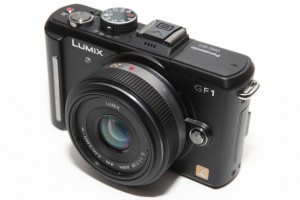
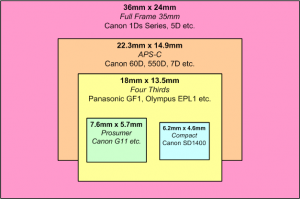

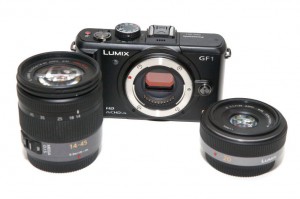
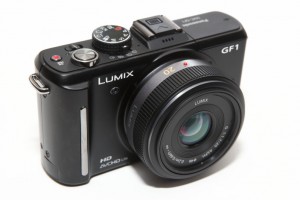
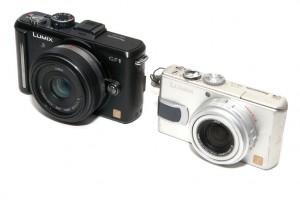
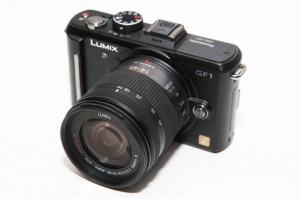
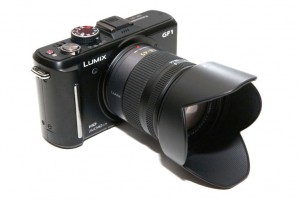
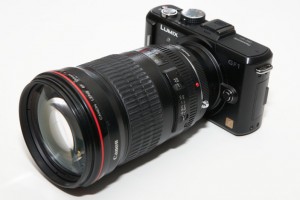
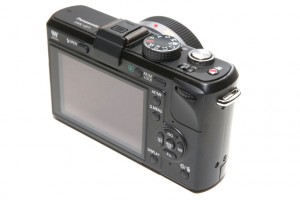
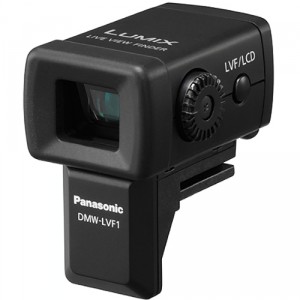
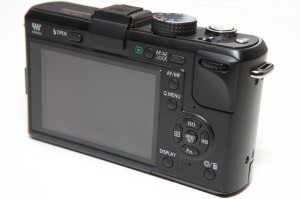
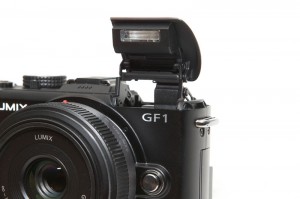

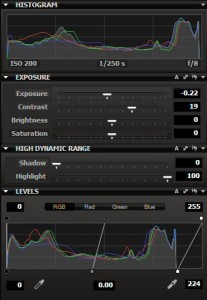


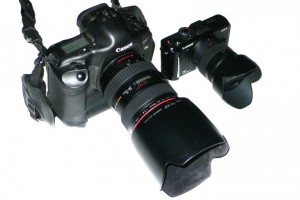

Vey very interesting my son but a bit beyond my limited knowledge of a camera or anything else that requires such a technical mind. I see the improvement tho as you did explain well.
Hope to see more photos one day soon.
love
Mom
Nice review, just a little boring and unenthusiastic to me (who is a GF1 user). To me the GF1 is a big step up from point’n shoot (had a sony w300). The pictures I take with the 20mm looks fantastic. And of course the size is fantastic, its just a lot of fun in a great package. I think you miss the point a little when you are comparing it to the 1Ds Mark II, even though if that is possible, the GF1 is a success.
Excellent review! We have been in the market for a new camera for quite some time now. There are so many options available that it boggle’s my mind. This review helps greatly.
Thank you.
i really like the gf1 i am jjust annoyed that there is no zoom on the pancake lens